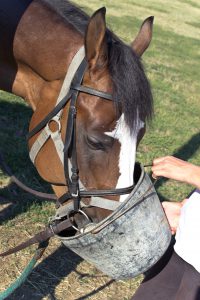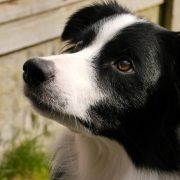Exploring human behavior change in equine welfare: Insights from a COM-B analysis of the UK’s equine obesity epidemic
Exploring human behavior change in equine welfare: Insights from a COM-B analysis of the UK’s equine obesity epidemic

our summary:
Furtado, T. et al. (2022) Exploring human behavior change in equine welfare: Insights from a COM-B analysis of the UK’s equine obesity epidemic. Frontiers in Veterinary Science, 9, no. 961537
The aim of this study was to explore the experiences, perceptions and motivations of horse owners using the COM-B model of behaviour change (COM-B: Capability-Opportunity-Motivation-Behaviour) to show areas where behaviour change could facilitate better equine weight management.
The study used qualitative data collected over a three-year period from semi-structured interviews with horse owners and equine professionals, discussion threads about equine obesity and its management from open access UK discussion fora, focus groups with horse owners interested in managing weight, and field notes. The data was analysed using a grounded theory approach to identify common themes and then analysed using the COM-B model to identify areas where human behaviour change might be better supported.
Results of the analysis highlighted that owners found applying their knowledge of how and where fat might be located on a horse to their specific horse’s body and then subsequently making changes to their horse’s management problematic. Motivation to change strengthened once the horse had experienced a weight-related illness, such as laminitis. Environmental restrictions, ritualistic behaviours around feeding, the owner’s physical capabilities, and social norms in relation to overweight horses all influenced behaviour. The importance of a holistic approach to behaviour change was highlighted.
Limitations of the study include that the data was self-reported by the owners and subject to potential confirmation and hindsight bias. Whilst not a limitation qualitative research methods seek to create a deep understanding of participants’ experiences rather than create a generalisable set of data which fit into one category or another.
This study provides evidence about the complexities of managing obesity in horses. As such a range of interventions including increasing owner knowledge and providing social support, that also consider environmental factors and owners capabilities are required. A collaborative approach to tackling equine obesity involving horse owners, veterinary surgeons, farriers, behaviourists, nutritionists and other equine professionals is encouraged.
References for previous studies
Furtado, T. et al. (2021) Exploring horse owners’ understanding of obese body condition and weight management in UK leisure horses. Equine Veterinary Journal, 53 (4), pp. 752-762. https://doi.org/10.1111/evj.13360
An inFOCUS summary of this article is available
Furtado, T. et al (2021) Hidden in plain sight: uncovering the obesogenic environment surrounding the UK’s leisure horses. Anthrozoos, 34 (4), pp: 491-506. https://doi.org/10.1080/08927936.2021.1914431
Claiming CPD for reading inFOCUS articles
Reading and reflecting on articles can count towards your CPD, and we have a template to help you with the process.
Image copyright attribute: gavran333
Join the discussion
We encourage discussion on all material highlighted in each edition of inFOCUS. Use the button below to join the conversation on Twitter and include your comment in the feed for this issue.







Leave a Reply
Want to join the discussion?Feel free to contribute!